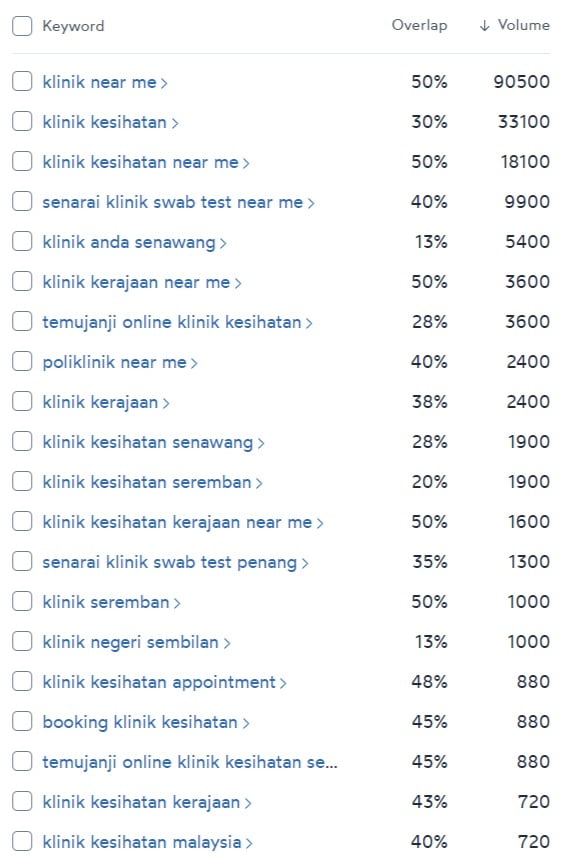- About
- Service
- We Work With
- Healthcare Specialists
- Law Firms
- Service Businesses
- Car Business
- Home Improvement Business
- Plumbing Companies
- Electrical Services
- Roofing Companies
- Handyman Contractor
- Fridge Repair
- Alarm and CCTV
- Audio Visual Specialist
- Autogate Businesses
- Solar Panel Companies
- Interior Designers
- Awning contractor
- Water Heater Install and Repair
- Furniture Installer
- Structural Engineer
- Security Window/Door Installer
- TV Repair
- Mosquito Net Suppliers
- Lighting Installer
- Home Inspection
- Washing Machine Cleaning
- Grass Cutter
- Domestic Mover
- Ceiling Fan
- TV Mounting
- Oven Repair
- Locksmith
- Gardener
- Kitchen Hob
- Electric Fence
- Event and Wedding Planner
- Bands and Singers
- Balloon Artist
- Event Space
- Party Planner
- Hair Stylist
- Makeup Artist
- Event Photographer
- Wedding Photographers
- Wedding Halls
- Photo Booth
- Magician Service
- Invitation Card Printing
- Invitation Card Designer
- Event Equipment Supplier
- Event Catering
- Emcee
- Deejay Service
- Custom Suit Designer
- Custom Shoes Designer
- Clown Services
- Wedding Gifts
- Wedding Car Rental
- Private Chef
- Beauty and Wellness
- Pricing
- Case Study
- Blog
- Contact
The Role of Digital Marketing in Healthcare
- Home
- Blog
- The Role of Digital Marketing in Healthcare

- Justin Tai
- May 26, 2023
Table of Contents
ToggleIn today’s technologically driven world, the dynamics of marketing have significantly evolved. Traditional marketing has been overtaken by digital marketing, a realm where businesses can reach out to millions within seconds. No industry is immune to this shift, and the healthcare sector in Malaysia is no exception.
The Landscape of Digital Marketing
In the heart of the 21st century, traditional marketing has been supplanted by digital marketing—a transformative approach to promoting products and services on digital platforms. Digital marketing leverages channels such as search engines, social media, email, and websites, establishing a powerful conduit for businesses to connect with both current and potential customers. Unlike its traditional counterpart, digital marketing is interactive, enabling businesses to actively engage with customers on a personal level, thereby fostering strong customer relationships.
Digital marketing offers a data-driven approach. Analytics and reporting tools provide insights into customer behaviour, helping businesses to adapt and refine their strategies, optimise marketing efforts, and ultimately, deliver superior customer experiences.
Various Avenues of Digital Marketing in Malaysia
Malaysia’s digital marketing landscape is a microcosm of diversity, offering businesses a plethora of channels to reach out to different customer segments. This encompasses:
Search Engine Optimisation (SEO): SEO is the process of optimising websites to rank higher in search engine results, thereby enhancing visibility and driving organic traffic.
Pay-Per-Click Advertising (PPC): PPC is an advertising model where advertisers pay each time a user clicks on their online ad. Google Ads is a popular PPC advertising platform.
Social Media Marketing: Leveraging social media platforms like Facebook, Twitter, Instagram, and LinkedIn, businesses can reach out to and engage with a vast audience.
Content Marketing: Through blogs, eBooks, white papers, infographics, and more, content marketing aims to provide valuable information to users, fostering trust and loyalty.
Email Marketing: Email marketing is a direct form of marketing that aims to communicate promotional messages to potential and existing customers.
Each of these channels has its strengths, offering unique ways for businesses, including healthcare providers, to reach their target audience.
Common Misconceptions about Digital Marketing
Despite the palpable benefits of digital marketing, misconceptions abound. It is often mistakenly perceived as overly complex, prohibitively expensive, and exceedingly time-consuming. Detractors argue that successful digital marketing requires extensive technical knowledge, hefty budgets, and significant time investments.
However, the reality is far removed from these myths. While digital marketing does require a certain degree of proficiency, resources like online tutorials, digital marketing courses, and expert consultations have made it more accessible than ever before. As for the cost, digital marketing strategies can be tailored to fit various budgets, from shoestring to extensive. Regarding the time commitment, digital marketing is akin to a marathon rather than a sprint. Its success hinges on continuous, strategic efforts over time rather than quick fixes.
Myth-Busting: The Reality of Digital Marketing
Contrary to popular belief, digital marketing is not exclusive to large corporations with deep pockets. It holds immense potential for businesses of all sizes, including small-to-medium enterprises (SMEs) and startups. With the right strategy, digital marketing can provide a significant return on investment (ROI), regardless of the scale of the business.
Digital marketing strategies can be customised to align with a business’s specific needs, goals, and budget. By harnessing the power of SEO, PPC, social media, and content marketing, even small businesses can compete with larger players in the digital arena.
For healthcare providers in Malaysia, digital marketing opens up new avenues for patient engagement and service promotion. It enables them to reach a wider audience, improve service visibility, and ultimately, provide better patient care. In an era where the internet is a primary source of information, healthcare providers can ill afford to overlook the power of digital marketing.
Digital Marketing for Healthcare Providers: What does it mean?
For healthcare providers, digital marketing transcends the traditional concept of promoting services and products. In the era of digital transformation, it extends to fostering relationships with patients, facilitating access to medical information, and providing efficient healthcare services.
Digital marketing tools can streamline operations for healthcare providers in several ways. They can automate patient appointment scheduling, reducing administrative burdens. Educational content disseminated via blogs, podcasts, or webinars can inform patients about common diseases, preventive measures, and treatments, thereby fostering an informed patient base.
In essence, the correct application of digital marketing strategies can significantly enhance the operational efficiency of healthcare providers and boost patient satisfaction
Social Media vs Google: A Comparison for Healthcare Providers
Both social media and Google offer unique advantages as digital marketing channels. However, understanding their individual characteristics and potential impact is crucial for healthcare providers.
Social media platforms like Facebook, Instagram, and Twitter, with their vast user base, can offer tremendous exposure. They facilitate direct interaction with patients, help gather patient feedback, and even allow immediate response to patient queries or concerns.
However, social media’s vast reach isn’t always advantageous for healthcare providers. The users encountered on these platforms have diverse needs and may not necessarily require medical services. Consequently, healthcare providers might invest time and resources reaching out to a large number of people who aren’t prospective patients.
Contrarily, Google’s marketing tools, including SEO (Search Engine Optimisation) and PPC (Pay Per Click), offer targeted marketing strategies. They connect healthcare providers to users who are actively seeking specific healthcare services. For example, if a user searches for ‘dentist in Kuala Lumpur,’ Google can direct them to relevant local dental clinics.
The Pitfalls of Social Media Marketing for Healthcare Providers
While social media platforms are powerful tools for engagement, they have their shortcomings for healthcare providers. Their vast reach might result in marketing messages reaching an audience not presently requiring medical services, or who are outside the provider’s locality. As a result, healthcare providers might face the challenge of expending resources without witnessing a significant increase in patient numbers or engagement.
Moreover, the fast-paced nature of social media may make it difficult for healthcare providers to sustain audience attention. It’s easy for messages to get lost in the endless flow of social media content, requiring constant content creation and updates.
The Advantage of Google Marketing for Healthcare Providers
Google marketing presents a unique advantage: the targeting of motivated, interested users. This search engine giant can link healthcare providers with individuals actively searching for specific health services, offering a higher probability of conversion than social media.
In addition, Google provides tools that specifically cater to location-based searches. Local SEO and Google Ads prioritise your healthcare facility in searches from users within your service area. This feature is crucial for healthcare providers, as people often prefer services that are within easy reach.
For instance, a user searching for ‘urgent care clinic near me’ is not only in immediate need of medical attention, but is also likely to prefer nearby options. Therefore, focusing on local SEO and Google Ads can yield more efficient results, better resource utilisation, and ultimately, a higher return on investment for healthcare providers.
Diving Deeper: Google’s Marketing Tools
Google, a digital powerhouse, offers a variety of tools aimed at helping businesses promote themselves online effectively. Understanding each one’s functionality and benefits is crucial for developing a comprehensive digital marketing strategy. Let’s delve deeper into three of these tools: Paid Ads, Local SEO, and Organic SEO.

Google Paid Ads / Pay-Per-Click ads
Google Paid Ads, also known as Pay-Per-Click (PPC) advertising, is a model of online marketing where advertisers pay a fee each time one of their ads is clicked. When implemented correctly, PPC can place your business at the very top of search results, guaranteeing instant visibility. This strategy is excellent for driving immediate traffic to your site, but it requires a consistent investment, as you’re paying for every click.
Local SEO
Local SEO (Search Engine Optimisation) is a strategy for optimising your online presence to attract more business from relevant local searches. These searches take place on Google and other search engines. For instance, someone looking up ‘dental clinics near me’ on Google is performing a local search. By optimising for local SEO, your clinic can appear in these search results, connecting you with potential patients in your immediate vicinity. It’s a cost-effective strategy that provides high returns over time.



Organic SEO (Normal SEO)
Organic SEO, unlike Local SEO and Paid Ads, focuses on improving unpaid, natural search results. It involves optimising your website and content, improving your site’s visibility on search engine results pages (SERPs). While Organic SEO doesn’t require direct payment for clicks like PPC, it does take time and consistent effort to achieve higher rankings. However, once high rankings are attained, they can be maintained with minimal effort, offering a sustainable and cost-effective way of attracting traffic.
Paid Ads, Local SEO, and Organic SEO: A Comparative Analysis
All three tools – Paid Ads, Local SEO, and Organic SEO – offer unique benefits and are invaluable components of a comprehensive digital marketing strategy. The suitability of each depends on the specific needs, objectives, and budget of your healthcare business.
Paid Ads offer the advantage of immediate visibility and quick results. They’re excellent for new websites looking for quick exposure or for competitive keyword categories. However, they require an ongoing budget and the cost per click can add up if not managed carefully.
Local SEO is an excellent strategy for healthcare providers operating in specific geographic areas. By focusing on local keyword phrases and optimising your site for local search, you can attract more patients from your local area. This strategy requires time and effort but doesn’t have the ongoing costs associated with Paid Ads.
Organic SEO is a long-term investment. It involves optimising your site and content to rank higher in organic, or non-paid, search results. While it doesn’t deliver instant results like Paid Ads, it builds credibility and trust over time, and once high rankings are achieved, they can be sustained with less effort compared to other strategies.
Why Local SEO and Search Ads Work?
Local SEO and Search Ads have proven to be particularly effective strategies for healthcare providers, and here’s why:
Firstly, Local SEO (Search Engine Optimisation) is about improving your online presence to become more visible in localised search results. When potential patients in your area search for services like “dentist near me” or “24-hour clinic in [City Name]”, a robust Local SEO strategy ensures your clinic’s website ranks high in those search results. This approach helps healthcare providers to connect with local patients at the very moment they are searching for healthcare services.
In addition to driving increased website traffic, Local SEO can also improve the quality of that traffic. Visitors referred by localised search results are often highly qualified leads because they are actively seeking the services you offer and are located in your area.
Next, Search Ads can be highly beneficial because they allow you to be strategically placed in search engine results. When a potential patient in Malaysia searches for a healthcare provider, your ad can appear at the top of the search results, making your clinic the first thing they see. Unlike Local SEO, Search Ads can produce immediate results, making them an excellent option for newly established clinics or those running time-sensitive promotions.


The Power of Statistics: Search Trends in Malaysia
The relevance and power of Local SEO and Search Ads become even more apparent when we look at the search trends in Malaysia. Google processes approximately 400,000 searches related to clinics every month. This statistic represents a vast pool of potential patients actively seeking healthcare services online.
Now imagine if your healthcare provider business could tap into even a fraction of these searches. It could mean a significant increase in website visits, calls for appointments, and ultimately, new patients. The potential for growth is truly impressive, highlighting the immense value and importance of a well-planned digital marketing strategy.
This data-driven approach also enables healthcare providers to stay ahead of the curve. Understanding search trends can help predict patient needs, tailor services accordingly, and refine marketing strategies for maximum effectiveness. It’s not just about being seen; it’s about being found by the right people at the right time.
In conclusion, the combination of Local SEO and Search Ads, coupled with a deep understanding of search trends, can equip healthcare providers in Malaysia with a powerful tool to increase visibility, attract more patients, and grow their practice.
Local SEO vs Search Ads: A Comparison
While both Local SEO and Search Ads can be effective, their use depends on the specific needs and goals of the healthcare provider. Local SEO is a long-term strategy, offering sustained visibility over time. Search Ads, meanwhile, can provide immediate visibility but require an ongoing investment.
In Summary: Embracing the Digital Shift
The digital revolution in Malaysia’s healthcare sector is here to stay. Embracing it is not only advisable but necessary. As a healthcare provider, leveraging the right digital marketing strategies can mean the difference between remaining stagnant or propelling your clinic to new heights. Visit our homepage to learn more about how we can help you harness the power of digital marketing.
Digital marketing is no longer a luxury; it’s a necessity. For healthcare providers in Malaysia, the time to embrace digital marketing is now. Not only does it provide a platform to reach potential patients, but it also opens up opportunities for better patient engagement and care.
FAQs
Digital marketing in healthcare refers to the use of digital tools and strategies to reach and engage patients. It includes a variety of tactics, such as search engine optimisation (SEO), pay-per-click (PPC) advertising, content marketing, social media marketing, and email marketing
Digital marketing helps healthcare providers reach more patients, improve engagement, streamline operations, and ultimately, enhance patient care. Given the increasing number of people seeking health information and services online, digital marketing has become an essential tool for healthcare providers in Malaysia
Google’s marketing tools like Local SEO and Search Ads can significantly help healthcare providers increase their visibility online, particularly in local search results. This can result in attracting more patients, especially those actively seeking healthcare services in their local area
Local SEO and Search Ads focus on localised searches and specific keywords, thereby connecting healthcare providers with individuals who are actively seeking their services within the local area. These strategies ensure that healthcare providers are easily found by potential patients at the very moment they are searching for healthcare services
Understanding search trends is crucial for healthcare providers in Malaysia as it provides valuable insights into what potential patients are looking for. With approximately 400,000 searches related to clinics every month on Google in Malaysia, there’s a massive opportunity for healthcare providers to reach and engage with potential patients online


